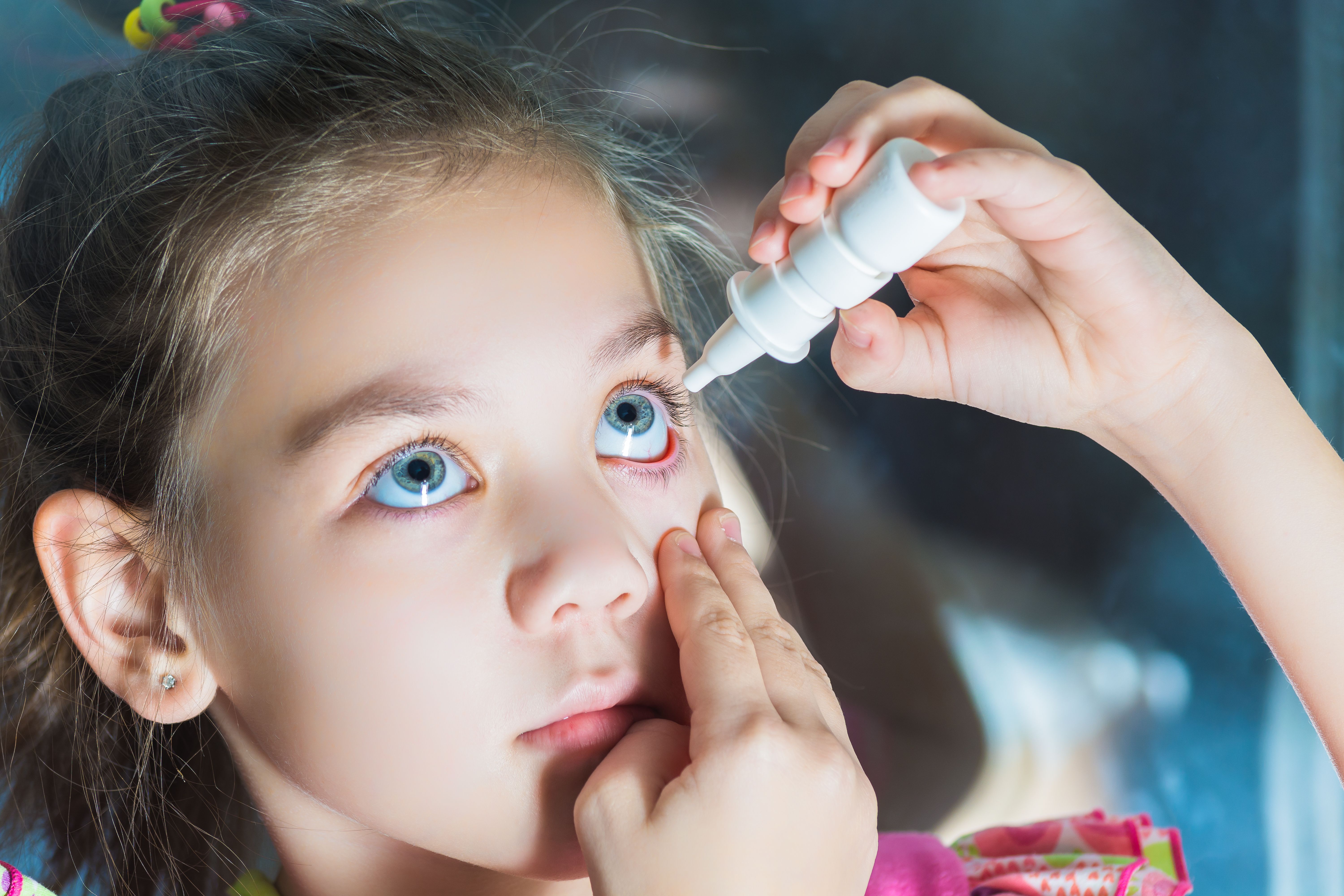Article
Medicated eye drops may delay myopia in children
Author(s):
While low-dose atropine eye drops are currently being used to slow myopia progression in several countries in Asia, researchers set out to determine if the medication could also the onset of myopia.
The goal of the research, according to the study, was to evaluate the efficacy of low-concentration atropine eyedrops at 0.05% and 0.01% concentration for delaying the onset of myopia. (Adobe Stock image)

Using nightly eye drops with 0.05 percent atropine could slow the progression of myopia in children, at least temporarily, according to a recent study.
The study,1 published recently in JAMA, focused on the use of drops with 0.05 percent atropine, a medication that relaxes the eye muscle responsible for focusing vision.
The prevalence of myopia has risen rapidly over the last few decades. About one-fourth of the global population currently has the condition. It is expected to affect half of people worldwide by 2050.
While low-dose atropine eye drops are currently being used to slow myopia progression in several countries in Asia, Jason Yam, PhD, and colleagues set out to determine if the medication could also the onset of myopia. Yam is an ophthalmologist with the Chinese University of Hong Kong.
In the randomly assigned clinical trial that included 474 children aged 4 to 9 years without myopia, nightly use of 0.05% atropine, 0.01% atropine, and placebo eyedrops resulted in a 2-year cumulative incidence of myopia of 28.4%, 45.9%, and 53.0%, respectively. The difference between 0.05% atropine and placebo was statistically significant.
The first recruited participant started treatment on July 11, 2017, and the last participant was enrolled on June 4, 2020; the date of the final follow-up session was June 4, 2022.
According to the study, while 0.05% atropine eyedrops resulted in a significantly lower incidence of myopia at 2 years compared with placebo, further research is needed to replicate the findings and to understand whether this represents a delay or prevention of myopia.
Researchers also pointed out that the early onset of myopia is associated with high myopia later in life, and myopia is irreversible once developed.
The goal of the research, according to the study, was to evaluate the efficacy of low-concentration atropine eyedrops at 0.05% and 0.01% concentration for delaying the onset of myopia.
Participants were assigned at random to the 0.05% atropine (n = 160), 0.01% atropine (n = 159), and placebo (n = 155) groups and had eyedrops applied once nightly in both eyes over 2 years.
According to researchers, the primary outcomes were the 2-year cumulative incidence rate of myopia (cycloplegic spherical equivalent of at least −0.50 D in either eye) and the percentage of participants with fast myopic shift (spherical equivalent myopic shift of at least 1.00 D).
Of the 474 randomized patients (mean age, 6.8 years; 50% female), 353 (74.5%) completed the trial. The 2-year cumulative incidence of myopia in the 0.05% atropine, 0.01% atropine, and placebo groups were 28.4% (33/116), 45.9% (56/122), and 53.0% (61/115), respectively, and the percentages of participants with fast myopic shift at 2 years were 25.0%, 45.1%, and 53.9%.
Compared with the placebo group, the 0.05% atropine group had significantly lower 2-year cumulative myopia incidence (difference, 24.6% [95% CI, 12.0%-36.4%]) and percentage of patients with fast myopic shift (difference, 28.9% [95% CI, 16.5%-40.5%]). Compared with the 0.01% atropine group, the 0.05% atropine group had significantly lower 2-year cumulative myopia incidence (difference, 17.5% [95% CI, 5.2%-29.2%]) and percentage of patients with fast myopic shift (difference, 20.1% [95% CI, 8.0%-31.6%]).
According to researchers, the 0.01% atropine and placebo groups were not significantly different in 2-year cumulative myopia incidence or percentage of patients with fast myopic shift. Photophobia was the most common adverse event and was reported by 12.9% of participants in the 0.05% atropine group, 18.9% in the 0.01% atropine group, and 12.2% in the placebo group in the second year.
Researchers also found that among children aged 4 to 9 years without myopia, nightly use of 0.05% atropine eyedrops compared with placebo resulted in a significantly lower incidence of myopia and lower percentage of participants with fast myopic shift at 2 years.
“There was no significant difference between 0.01% atropine and placebo,” the researchers concluded. “Further research is needed to replicate the findings, to understand whether this represents a delay or prevention of myopia, and to assess longer-term safety.”
Reference
1 Jason C. Yam, MPH. Klu Juan Zhang, PhD, Yuzhou Zhang, PhD; et.al. Effect of Low-Concentration Atropine Eyedrops vs Placebo on Myopia Incidence in Children: The LAMP2 Randomized Clinical Trial. JAMA. Published February 13, 2023. doi: 10.1001/jama.2002.24162
Newsletter
Don’t miss out—get Ophthalmology Times updates on the latest clinical advancements and expert interviews, straight to your inbox.





